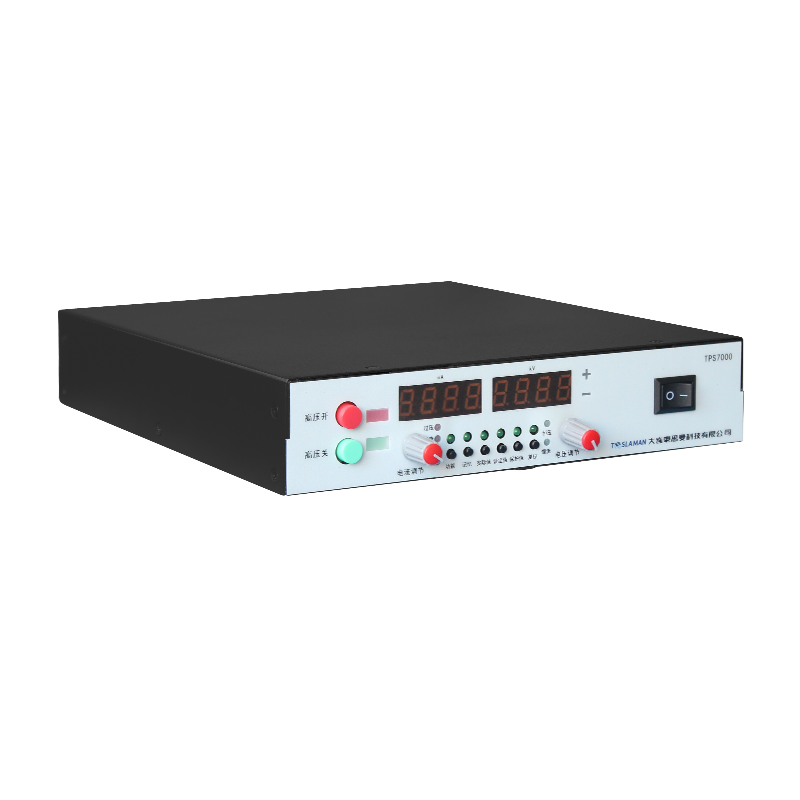Power Output Range of Neutron Tube High-Voltage Power Supplies: Technical Analysis
Neutron tubes, as compact accelerator-based neutron sources, rely on high-voltage power supplies whose power output range directly determines neutron yield, stability, and application scenarios. The power supply must provide precise high-voltage electric fields for ion acceleration while addressing challenges like load fluctuations, heat dissipation, and electromagnetic interference. Power design must be deeply integrated with the neutron tube’s physical characteristics.
I. Low-Power Portable Applications (<100 W)
Targeting portable devices (e.g., oil logging, security inspection), power typically ranges 10–100 W, with output voltage 80–120 kV and current 0.1–1 mA. Key designs include:
Miniaturization & Efficiency: High-frequency switching topologies (e.g., LLC resonance) reduce transformer size and enable battery operation.
Noise Immunity: Shielding layers and filtering circuits suppress ripple (<0.1%), preventing ion beam jitter from affecting neutron yield.
Example: Handheld neutron detectors (~30 W, 0.5 mA beam) achieve 10⁷ n/s yield for trace explosive or drug detection.
II. Medium-Power Industrial Applications (100 W–10 kW)
Used in industrial online analysis (e.g., coal quality, metal composition), power ranges 100 W–5 kW, voltage 120–200 kV, current 1–20 mA. Critical technologies:
Dynamic Response Control: Hardware feedback circuits (e.g., differential amplification + PWM modulation) stabilize ion source current (±2%) by adjusting filament temperature in real-time.
Thermal Management: Air or liquid cooling prevents target hydrogen embrittlement and cracking.
Example: Cement raw material analyzers (2 kW, 10 mA beam) yield 10⁸ n/s for real-time calcium/silicon monitoring.
III. High-Power Research & Fusion Systems (>10 kW)
For neutron radiography or fusion neutron sources, power reaches 10–50 kW, voltage 200–350 kV, current 50–140 mA. Core challenges:
Ripple Suppression: Multi-stage filtering and soft-switching (e.g., IGBT + nanocrystalline cores) reduce ripple to 0.08%.
Radiation Hardening: Optimized magnetic circuits (e.g., ferritic stainless steel) maintain >0.4 T field strength under irradiation.
Beam Uniformity: Multi-stage electrodes modulate mA-level beams, while concave targets enhance heat dissipation.
Example: Deuterium-tritium fusion neutron sources (50 kW, 350 kV/140 mA) achieve 10¹⁰ n/s for nuclear material studies.
Key Factors Influencing Power Selection
1. Target Material & Cooling: High-yield tubes (>10⁹ n/s) require liquid-cooled targets (e.g., oil) to prevent tritium desorption.
2. Ion Source Type:
Penning sources: Simple structure but <50% monatomic ions, demanding higher beam power.
RF sources: >85% monatomic ions, higher efficiency but require impedance matching.
3. Lifetime & Stability: In situ target technology replenishes tritium but needs dynamic power response to consumption rates.
Future Trends: Intelligence & Multi-Objective Optimization
Next-gen power supplies will integrate digital algorithms to balance power, lifetime, and yield. For example, monitoring target temperature and beam drift can dynamically adjust voltage/duty cycle, maintaining 10⁹ n/s yield while reducing thermal loss by 30%.




















